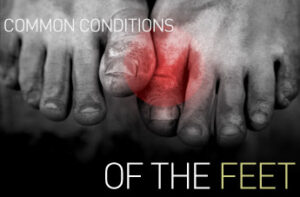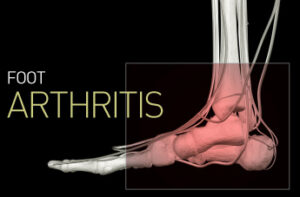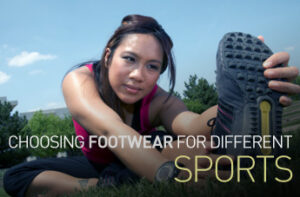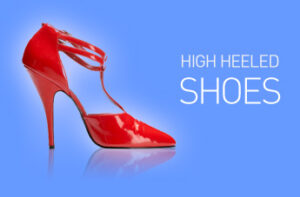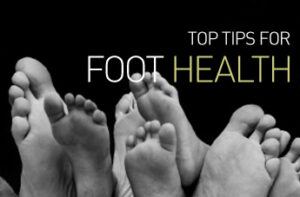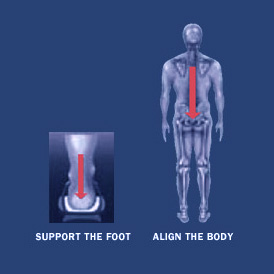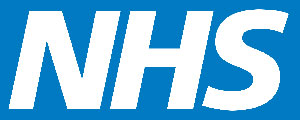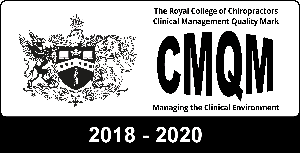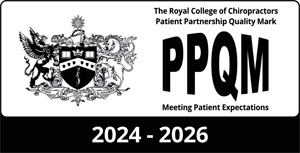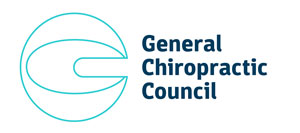Feet are one the most used parts of the human body; they are constantly under stress as we go about our normal lives. Feet work for us the whole day, whether we stand, play, run or walk.
Many things affect the condition of feet including activity level, occupation, other health conditions and footwear. The foot is an incredibly complex mechanism which serves as a shock absorber and propulsion engine.
Anatomy of the foot
The foot and ankle contain:
- 26 individual bones and over 100 ligaments
- Over a quarter of the bones in your body
- 33 joints
- More than 100 muscles
- Tendons
- Blood vessels
- Skin of the foot has over 7000 nerve endings
- There are over 125,000 sweat glands on each foot, more than anywhere else in the body
- Your feet produce an eggcup’s worth of sweat every day
All these foot components combine to provide the body with support, balance and mobility.
Corns and calluses
Thick and hard areas of skin (calluses) can appear anywhere on the feet where persistent rubbing or uneven pressure occurs. The most common places are the heel, the ball of the foot and the side of the toes, where flat feet, bunions or ill-fitting shoes may be responsible. As time goes by calluses may become cracked and painful or develop into corns.
Corns come in two types: soft corns appear between the toes because of unusual pressure and hard corns are found on the top or the end of the toes or the soles of the feet and are caused by abnormal pressure.
Using a pumice stone or an emery board can also help with removing hard skin but they don’t work well for corns, tending to remove the overlaying hard skin but leaving the deeper and more painful corn ‘root’.
Moisturising helps to prevent reoccurrences of corns on the sole of the foot, but shouldn’t be used for soft corns as they will already be moist.
Plantar fasciitis
The plantar fascia is a fibrous band that stretches between the heel and the base of the toes. It helps to maintain the structure and shape of the foot. This can often be the cause of severe heel pain. Plantar fasciitis causes small tears to appear on the heel and becomes inflamed and extremely painful.
Typically, pain is felt first thing in the morning after getting out of bed but recedes after around 30 minutes as the band is stretched and the swelling is reduced. Pain can also be felt under the arch of the foot after prolonged walking or standing.
Plantar fasciitis is more likely if you have:
- Flat feet
- High arches
- Weight problems
- Suddenly become more active (you have begun an exercise programme, for example)
It can get better with rest, but this can take a long time and the pain can be so severe it prevents some people from walking. Treatment involves resting the foot as much as possible, applying an ice or heat pack to the heel, stretching and strengthening exercises, or wearing appropriate footwear and insoles. Speak to one of the chiropractors if you think you have this condition for further advice.
Athlete’s foot
This fungal infection grows in warm, moist areas of the body. Between sweaty toes is an ideal home for the fungus, which is usually picked up from swimming pools and communal changing rooms.
It makes the skin itchy, red and sore and, if not treated, the skin soon becomes soggy and starts to crack and peel. The fungus can also spread to the toenails.
Toenail problems
During an average three months, a toenail grows 1cm (at 0.1mm each day). White spots can appear following simple knocks to the nail, vertical ridges appear with age and fungus can invade from the surrounding skin.
Avoid pointing anything sharp down the sides of a toenail because it can become infected and will be swollen, red and painful. Similar symptoms happen when the toenail grows into the corner – an in-growing toenail.
Verrucae
These are caused by a virus that infects the skin. They’re similar to warts on hands. A verruca can be difficult to spot and are often painless when small. They usually appear as areas of rough skin, sometimes with tiny black spots in them.
Most often they’re passed around where it’s wet and people are walking barefoot, such as at swimming pools and in gym showers. They’re easier to treat when small. Salicylic acid treatments from the pharmacist can work if they’re caught early.
Rheumatoid arthritis
Rheumatoid arthritis (RA) is a condition that causes inflammation in many joints of the body, including the feet. The sooner it’s diagnosed the more effective your treatment can be. Don’t ignore joint pain, as RA often shows up in the feet first.
Osteoarthritis
Osteoarthritis (OA) is often called the ‘wear and tear’ arthritis. It usually appears in people over 40 when the cartilage between bones has become worn and is no longer cushioning the joint as well as it used to. OA affects joints that have been under pressure and is common in feet, especially in the joint at the base of the big toe.
Sports shoes are probably the most important piece of equipment you’ll buy so it’s vital you pick the right pair. Many people do not realise there are big differences in the way sports shoes support your feet. It’s not good for your feet if you play football or tennis in the same trainers you use for jogging.
Ill-fitting trainers may be the cause of back, knee or hip pain, Achilles tendonitis, shin splints and painful blisters to name a few conditions. Trainers are an important piece of fitness equipment, changing what you wear on your feet can prevent injuries.
Dancing
A dancer’s feet can experience a lot of wear and tear. Common foot problems include metatarsalgia (a painful condition affecting the metatarsal region of the foot), plantar fasciitis (heel pain), shin splints, Achilles tendonitis and calluses. Pain at the front of the foot is common because many dance movements involve landing on the front of the foot after a jump and friction blisters can be caused by ill-fitting shoes.
Racquet sports
It’s important when playing racquet sports, such as tennis or squash, to choose shoes specifically designed for the purpose. These sports involve a lot of side-to-side movement and running shoes won’t offer the right stability. Racquet sport shoes are heavier and stiffer than running shoes, as their toes are built for stop-and-go action. Comfort should be your number one priority and it’s important to replace your sports shoes frequently.
Running
Running shoes are great for running and only running. They’re very flexible, allowing the foot to bend and flex through each step but they’re not suitable for sports such as tennis that involve sideways stepping.
It’s a good idea to get your running shoes properly fitted to suit your foot type. If they’re too small, they can cause blisters and black toenails. There are many types of trainers on the market, so it’s advisable to find a specialist retailer who will assess your foot and find the right shoe for you.
Walking and hiking
For short walks in urban areas or easy countryside, a good, comfortable pair of shoes that won’t cause blisters are fine. Use tough shoes that are a good fit, with an arch support, a slightly elevated heel and ‘breathable’ uppers such as leather. Casual shoes or quality trainers with heavy soles will do.
Regular walking requires the use of a pair of proper walking shoes or some lightweight walking boots. These will give your feet and ankles proper support and will be waterproof.
Other sports
Cross-trainers are stiffer, provide more support for side-to-side movements and can be used across a range of activities. Sports shoes, ideal for basketball, netball and so on, give a combination of flexibility and sideways support. Fitness shoes combine flexibility, support and cushioning to absorb impact and lessen shock to the feet. They’re ideal for aerobics.
High heeled shoes throw weight onto the ball of the foot, which may lead to calluses, painful bunions, corns and deformity. They push the centre of mass in the body forwards, causing the spine to bend backwards to compensate, this can lead to back problems. The position of the foot in the shoe and an often-narrow heel width can cause the ankle to become unstable, resulting in ankle sprains. The calf muscle may shorten and tighten. Wearing high-heels for long periods (more than six months) may cause the calf muscle to become shortened all the time. The body compensates for this tightness in the calf-muscle by lowering the arch of the foot, or affecting the knee, hip or back.
Top tips for wearing high heels:
- Keep high heels for special occasions.
- Save backless high-heeled shoes for evening glamour. Backless shoes force your toes to claw as you walk, straining the muscles if worn over a long period.
- Calf stretches help to keep feet supple and keep a good range of movement. To stretch your calf and heel, stand facing a wall with feet hip width apart and slightly bent at the knee. Take one step forwards and using your arms to lean against the wall, keep your leg in front bent and the leg behind straight. Both feet should be flat on the ground. Lean in towards the wall. As you do, you should feel your muscles stretching in your calf and heel. Hold and slowly return to a standing position. Do this with each leg about five times.
- Vary heel heights from day to day, one-day wearing low heels, and the next day slightly higher heels.
- Vary shoe types.
- Consider wearing shoes with a strap or lace over the instep rather than slip-ons. This will help stop your foot sliding forward, a bit like a seatbelt in a car
Top tips for healthy feet
Simple foot care and wearing correctly fitting footwear will ensure your feet stay healthy.
- Keep them dry.
- Wear clean socks each day.
- Allow shoes time to dry.
- Wear correctly fitting footwear.
- Don’t go to bed without washing your feet. If you leave dirt on the skin’s surface, it can become irritated and infected. Wash your feet every evening with soap and water.
- Dry your feet thoroughly after washing them and apply a special moisturising foot cream (not body lotion).
- Moisturise the skin, but don’t use cream between the toes.
- Gently remove hard skin and calluses with a pumice stone or foot file on a regular basis.
- Always trim your toenails straight across, never at an angle or down the edges. This can cause ingrown toenails.
- Shop for shoes in the afternoon as feet swell as the day goes on and if shoes fit in the afternoon when your feet are at their largest, you can be assured they will be always be comfortable.
- If you have to wear heels at work, wear comfortable shoes to and from the office and only wear your smart shoes in the office. Try to vary the heel height, between low, medium and high.
- Be shoe savvy. Wear high heels and pointed shoes for special occasions only and always wear the right shoes for the job.
Orthotics
Orthotics are shoe inserts that are intended to correct abnormal or irregular biomechanics (walking pattern). They are not solely arch supports as they perform functions that make standing, walking and running more comfortable and efficient, by altering slightly the angles at which the foot strikes a walking or running surface.
Whether you’re an athlete, spend your days on your feet, or just want to be more active, orthotics might be an option; please contact us if you would like more information.

